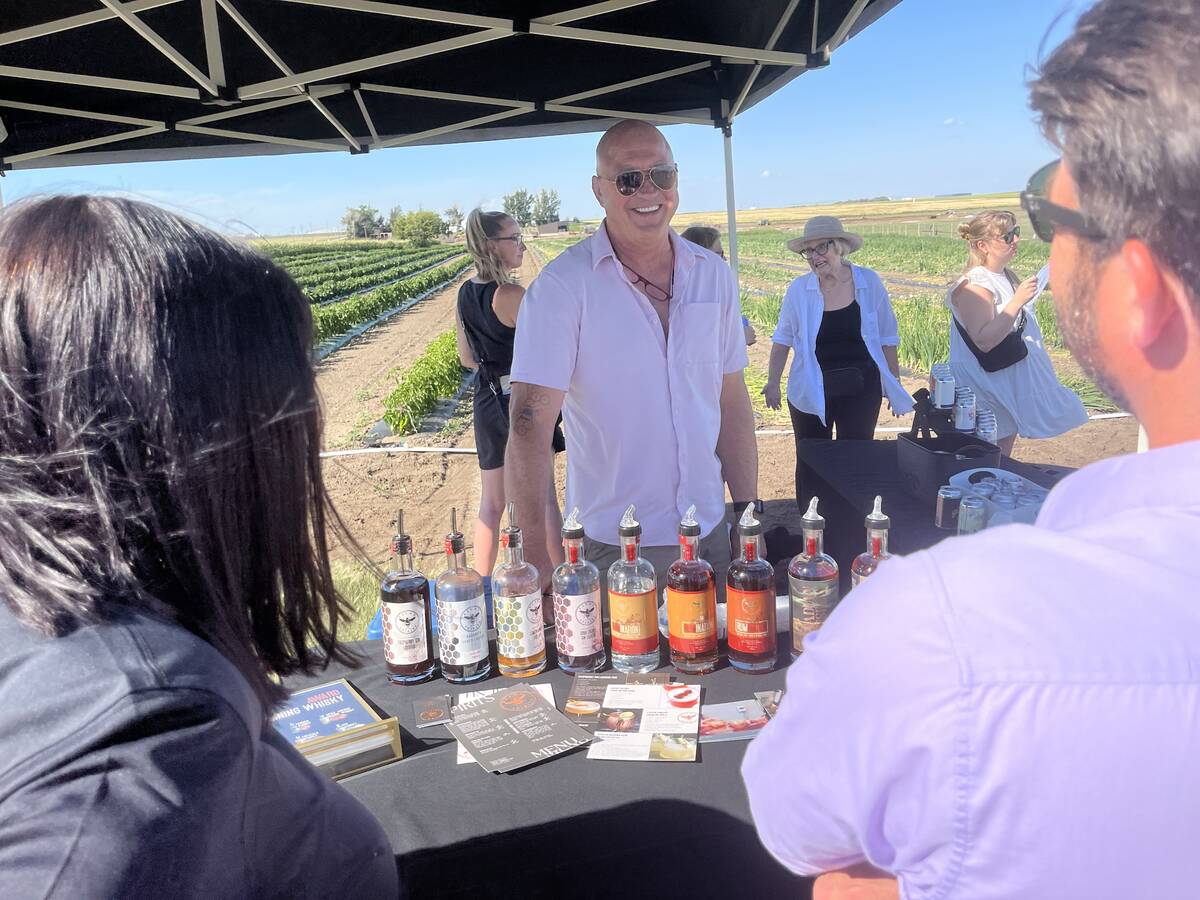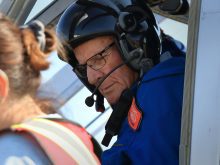HUMBOLDT, Sask. – One afternoon in 1976, Merv Copeland climbed out of the tractor seat as he had done many times before. On that day, he was working for a farmer near Paradise Valley, Alta.
He didn’t shut off the power take-off.
As he walked, he slipped and fell into the baler. His arm was trapped between the rollers.
Copeland tried to stuff twine and a boot between the rollers to pop them open and free his arm. He then tried a fencepost but his second arm became trapped. He eventually pulled himself out and walked home under his own steam.
Read Also

From farmer to award-winning distiller
Pivot Spirits showcases transition from farmer to distiller with provincial award-winning results in Alberta for Lars Hirch
Later in hospital, both his arms were amputated and he spent six months there and in rehabilitation recovering and deciding what to do next.
Copeland, who had been a mechanic and a hired hand, wanted to be a farmer. With the help of his wife, Lynn, and four children, he accomplished that goal.
He started small, buying 10 acres with his disability payment. He expanded to a half section. When high interest rates hit in the 1980s, he and his family moved to a smaller farm. Drought and the need to include his two sons who wanted to farm led the family to move to Saskatchewan in 2002 for cheaper land. They now have a grain and beef cattle farm in the
Sturgis area.
For Lynn Copeland, the adjustment to her husband’s injury was almost as severe. She had to learn to drive and became her husband’s hands. She also became an advocate for Merv when medical personnel tried to tell him what he could and could not do.
Merv’s advice to other farmers on how to avoid accidents is to use common sense.
“It’s not the machine at fault; it’s the individual. Even last fall I had to stop and walk away and then come back (for a cooling off break).”
Lynn said anyone can make an error but they need to learn from it.
The Copelands say they are survivors in another sense by making their marriage work for 40 years, despite the accident 30 years ago. They credit finding a stress relief for each as contributing to their success.
“He walks and I make bread,” Lynn said with a laugh.
And even though farming is not paying well, Merv said he is satisfied with the life as long as he can make his land and machine payments and still have food to eat.
“If I go broke, I’m not alone,” Merv said.
The Copelands told their story to a farm safety seminar in Humboldt March 14. The seminar was sponsored by Safe Saskatchewan, a coalition of government, private companies and non-profit groups that is trying to reduce the province’s injury rate.
The province’s rate of hospitalizations due to injury is twice the national average; its death rate is 1.4 times more. The number of injuries in Saskatchewan represents seven percent of the Canadian total, even though the province only has three percent of the population. The coalition is trying to raise awareness that injuries are preventable and not random acts of fate.
Gord Moker, a member of the coalition, told the meeting that Saskatchewan is having an “injury epidemic” that costs the provincial economy $1 billion a year. He said 40 percent of all emergency room visits are due to an accident or unintentional injury. He asked why someone suffering from cancer or a heart ailment should have to lose medical time to a person who decided not to do up his seatbelt.
Moker said farming is a dangerous profession because producers have many jobs: welder, mechanic, veterinarian, grain handler, carpenter and trucker. He urged producers not to take shortcuts and to plan their day before it starts. Safety comes with making a simple shift in the way one thinks.
“In this life there are so many things out of our control – earthquakes, bad weather, stroke – but injuries are mainly within our control and we can do something to prevent accidents.”














